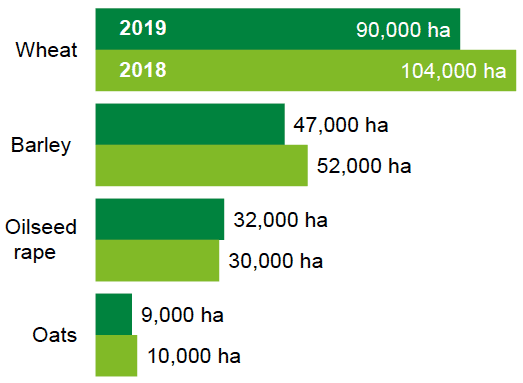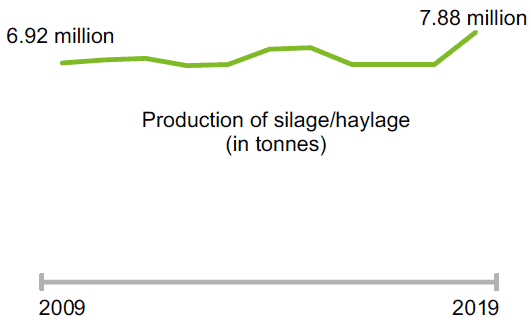Agricultural survey results: December 2019
Annual agricultural survey results based on data from larger agricultural holdings together with estimates for smaller farms.
This document is part of a collection
Crops & Grass

Crops planted in autumn and grown during winter are known as winter-planted crops. The area planted is dependent on weather. For example, heavy rainfall negatively impacts the area sown. The remaining area is generally planted in spring.
Area used to grow winter crops: 177,000 hectares
The area used to grow winter-planted crops decreased by ten per cent compared to the previous year.
Wheat and oats saw the largest reductions. The area used to grow wheat has gone down by 13 per cent and oats by 12 per cent. Oilseed rape was the only crop that increased in area, by four per cent.
The decrease in winter-planted crops is likely to be due to heavy rainfall in late summer and early autumn, with August being the wettest in over 100 years. This made it harder to plant and grow wheat, oats and barley. Oilseed rape, planted earlier in the season, was less affected.

Grass silage is grass cut in the summer which is fermented and has a high moisture content. It is used as animal feed in the winter. Haylage is grass cut in the summer which has a low moisture content. It is mostly used to feed horses.
Hay is grass which has been cut and left to dry, after which it is stored. It is used as animal feed.
Production of grass silage or haylage: 7.88 million tonnes
Better growing conditions in 2019 meant that the estimated production of grass silage or haylage increased by 15 per cent. Production is now 13 per cent higher than the ten-year average.
The increase in the production of grass silage or haylage was mainly due to an increase in yield. On average, farmers produced 22 tonnes of silage or haylage per hectare, an increase of 13 per cent. The total area used for silage and haylage remained relatively stable, with a two per cent increase.
The production of hay and arable silage also increased. Hay production increased by eight per cent to 308,000. The production of arable silage increased to 323,000 by 12 per cent.
Contact
Email: agric.stats@gov.scot
There is a problem
Thanks for your feedback